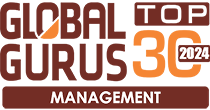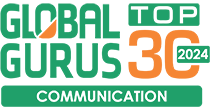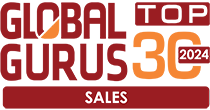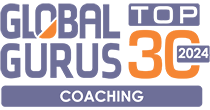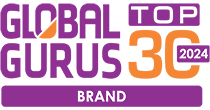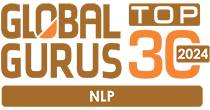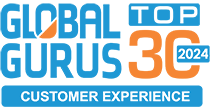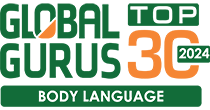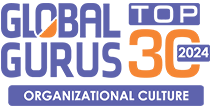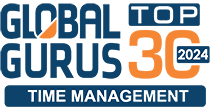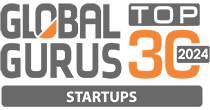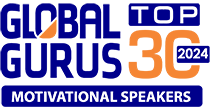Top 9 Must Haves For A Successful Startup Website
June 23, 2020

With most people tethered to their smartphones these days, it’s no wonder that a website is an essential sales and marketing tool for any business. You can reach your target audience online by using the right search engine optimization (SEO) strategies. This way, you can bring them to your site and market to them directly.
While anyone can easily create a website, especially with several popular hosting platforms to choose from nowadays, it’s still better to have professionals build your domain. Fortunately, you can enlist the help of companies, like Smartly Done Websites, for the development and maintenance of your site.
Here are the features that all successful startup websites must have:
- A Practical Domain Name
The first thing you should think about when creating a site for your startup is your domain name. The uniform resource locator (URL) is your business’s address in the digital world. If consumers want to learn more about your products and services, typing in your web address can bring them to your website.
You must choose a practical and sensible URL to increase memorability. Most brands typically use their company name. For instance, a business selling fuel and car fluids called “Pride and Preju-Grease” can use the domain name “prideandprejugrease.com” or “prideandprejugrease.net”. This way, you help consumers recall your enterprise with ease.
However, there may also be times when someone has already acquired the domain name you want. You can encounter this problem if you use generic terms for your brand, like “computer tools”. For this, adding your location can help you use your business name while improving your local SEO. You can use “computertoolsidaho.com” or “computertoolsidahofalls.com” to inform consumers that you’re based in Idaho.
- A Straightforward Homepage
When people type in your web address, they should be directed to your homepage. It usually contains the virtual directory of your website, including top-level menus, which allows visitors to explore more pages in your domain.
Plus, it also serves to give potential customers an idea of what your brand is about, as well as the products and services that you’re providing. A typical homepage has your company name and logo in a big, bold design, while, at the same time, displaying relevant media about your business. You can also showcase your latest promos and sales in a moving banner on this page.
These are the elements that your homepage should have:
- Logo – Your business’s logo should be placed in a prominent location on your website. This practice aids consumers in identifying your brand, as well as boosts retention.
- Navigation – This section pertains to the virtual directory that your homepage should have. The navigation can display the different sections in your domain. You can also add a search box if you’ve already published several content pieces. The navigation should be user-friendly and intuitive. It’s usually placed at the footer or in drop-down menus at the top part of your website.
- Headline – Aside from the logo, you must have a headline that informs consumers of your brand name. You can also add your company motto or a call-to-action (more on that later) to guide customers on what to do.
- Media – While text is necessary for clear communication, you can elevate visitors’ homepage experience by adding photos and videos. These types of content help catch their attention and keep them engaged. This gives you more time to market to them directly.
- A Complete FAQ Page
Frequently asked questions (FAQ) are common inquiries that potential customers have about your company, as well as your products and services. Having a dedicated FAQ page can save you and consumers time and energy. It won’t be necessary to have a lot of back and forth through chat messages or emails because interested buyers can check this section first to learn more about your merchandise.
Aside from relieving the burden of your support team, a FAQ page can also aid you in earning the trust of your target audience. It can show them that you take care of your customers, thus they’ll be more willing to purchase your items.
If you’re wondering where you can look for FAQ about your products and services, you can check your inbox and customer support tickets for recurring inquiries. You can also view competitors’ FAQ and consumer reviews for more ideas on how to address buyers’ anxieties.
- An XML Sitemap
An XML sitemap is more on the technical aspect of web development. If your homepage has a virtual directory that displays the different pages that visitors can explore, a sitemap does the same for search engine crawlers, which are the bots that go through millions of web pages in the World Wide Web.
A significant difference between a sitemap and virtual directory, which is usually found at the bottom part of your homepage, is that the former isn’t visible to human visitors. It’s primarily for search engines to increase the chances that your pages would be indexed or added to the search engine’s database. With this, your website can show up in relevant user queries.
A sitemap also includes metadata, which aids search engine crawlers in understanding what each page is about. Remember that these bots don’t have the same level of comprehension as humans, so they use metadata to contextualize the information published on your website, as well as other details, such as the relation of the pages to one another and the date when they were last updated.
- Clear About And Contact Pages
Your website is the best tool you have to introduce your brand to your target audience. It’s where potential customers can get first-hand knowledge about your brand, as well as your products and services. In developing a site, you should make sure to have About and Contact pages.
An About page has a relatively straightforward purpose. It’s used to inform visitors about the company and its operations. You can put your history, as well as vision and mission on this page.
Another significant benefit of having an About page is that it can aid your business’s marketing efforts. This section on your website adds a human element to your brand, which is valuable in capturing the emotions of consumers. When you gain potential customers’ trust, you increase the chances that they’ll support your enterprise wholeheartedly.
A Contact page is also a valuable part of your website since it facilitates communication and encourages discourse between you and the client. It’s not enough, however, to just put your phone and mobile numbers, as well as company email addresses. It’s better to put in a contact collection form to boost lead generation. The action of typing in their information also implies interest, which means that those who provide their details want to learn more about your products and services.
- An Accurate Catalog
Make your website even more convenient for potential customers by creating a digital catalog of your products and services. By providing this information, you answer their questions ahead, which shows that you care about consumers and have the foresight to think about their needs.
A digital catalog is more cost-effective because you can just publish it on your website, and thousands of potential customers can view your products and services. It eliminates the necessity of printing several copies, which wastes company resources.
Plus, you can update the catalog with ease. This factor is particularly valuable when you release new products or services regularly. Moreover, you get to promote your merchandise in the best possible light since you are publishing them first-hand.
The dimensions, price, and other relevant specifications are some of the details that your catalog should provide. This way, your customer support won’t have to keep on answering these types of recurring questions.
- A Genuine Testimonials Page
As mentioned above, your website is the top source of first-hand information about your company. That’s why it makes a lot of sense for you to have a dedicated testimonials page that showcases genuine, positive feedback for your products and services.
Reviews are an excellent tool to help persuade potential customers to support your enterprise. If you sell goods, you can incorporate the feedback into your catalog for each item so that buyers can read other people’s experiences with the product.
For services, such as business-to-business (B2B) companies, you can use various media for the reviews. Video content can be more convincing, especially when it shows a real person talking about how your company has helped theirs.
Some tips to help you build the best testimonials page:
- Use High-Resolution Media – This advice goes for all your website content. If you’re using images and videos, invest in tools that allow you to capture high-quality media. You don’t want to be known as the brand with blurry visuals.
- Get Your Client’s Best Angle – As stated earlier, video testimonials are more persuasive. You have to make sure, however, that you upload a flattering video of your customer. Otherwise, other clients won’t want to help provide reviews for fear of getting an unappealing shot.
- Ask For Specific Reasons – The best way to prove the authenticity of the testimonials is to encourage clients to be detailed about how your products and services have helped them. Ask them to give a backstory and context in their reviews to give potential customers an idea of how well the items or software work. Check out VocalVideo’s guide on how to make video reviews.
- Allow Search Filters – You can improve user experience on your testimonials page by enabling customers to set perimeters to narrow down their search. This is particularly helpful if you’ve acquired thousands of reviews already. For instance, potential clients can filter the content by industry, company size, or location so that they can read the most relevant stories for their needs.
- Try Various Formats – Aside from text, audio, and video, you can also search for reviews made by customers on social media. You can publish tweets and comments about your products and services on this page. Just make sure that you get the permission of the users who posted them first.
- A Strong Call-To-Action
A call-to-action (CTA) is a prompt that informs users what to do after visiting your website. CTAs are useful for virtually anything that you want visitors to accomplish. For instance, upon landing on your homepage, you can program a pop-up banner that encourages them to sign up for your weekly or monthly newsletter.
In your digital catalog pages, you can incorporate a lead collection field where they can provide their email address to stay abreast of your latest promos and discounts. Even something as straightforward as displaying your social media buttons and writing a prompt for visitors to follow you on those platforms can be considered as a CTA.
You need to have a strong CTA in critical sections of your website to serve as a guide for consumers. While people who visit your site have already expressed interest in your brand, most of them still need a little push in the right direction. With more encouragement and marketing, you can easily convert web visitors into paying customers in no time.
- A Blog With High-Quality Content
Your website should be more than just a platform for your products and services. You can ramp up your marketing efforts and start a blog about how consumers can use your merchandise or publish other relevant industry knowledge.
High-quality content is valuable for SEO. The right strategy, pertaining to keywords and links, can help you rise up the search engine ranks. More than that, however, it can help you gain authority in your niche because when consumers and other companies refer to your articles to support their claims, it serves as a vote of confidence on your material. This factor can boost your reputation and help you earn people’s trust.
Conclusion
Websites are valuable sales and marketing tools for any business, especially for startups that are still building a name for themselves. The first thing you should consider is the domain name that you’ll be using. You must choose one that’s easy to recall and which perfectly embodies your brand. Other crucial elements for your site include a homepage, FAQ page, XML sitemap, About and Contact pages, digital catalog, testimonials, CTA, and blog.









